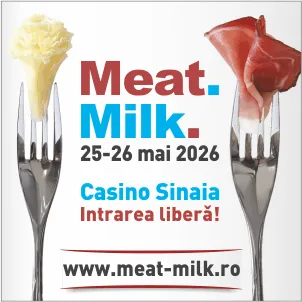
Romania's dairy industry is going through a challenging period, as cost pressures, shifting consumer preferences, and foreign competition are driving processors to constantly adapt. Although Romania produces approximately 4.4 million tonnes of milk annually, only 25–30% of this quantity reaches industrial processing, with the rest being consumed locally or sold directly.
One of the biggest difficulties for processors is the volatility of raw milk prices. In 2023, the price of raw milk fluctuated between 1.9 and 2.4 lei/litre, putting pressure on processing units’ profit margins. At the same time, rising energy costs have increased manufacturing expenses, impacting the final production cost by 10–15% compared to previous years.
The competition from imported dairy products is another major hurdle. Dairy imports from Hungary, Poland, and Germany are gaining ground in large retail chains, especially in the low-price segment, affecting sales of local brands.
Dairy consumption in Romania shows a downward trend in certain categories. Liquid milk consumption has dropped below 60 litres per capita per year, also influenced by the rise of plant-based alternatives. On the other hand, Romanian consumers are increasingly interested in health-oriented products such as lactose-free milk, organic dairy, or A2-type milk – but these involve additional production costs.
At the legislative level, European regulations are imposing additional sustainability measures on Romanian processors, including reducing plastic packaging and increasing traceability across the entire production chain. At the same time, product composition monitoring has become stricter, with regular checks on elements such as protein content and additives.
On the other hand, Romania’s dairy industry also presents significant opportunities. Growth in the premium segment – such as artisanal dairy products and those with protected geographical indication – offers prospects for local processors. Moreover, expanding exports to Middle Eastern markets and investing in automation to reduce technological losses can contribute to the sector’s recovery and consolidation.
In conclusion, the dairy industry is at a turning point, where the survival and development of processors will depend on their ability to invest in modernization, diversify their product range, and continuously adapt to consumer demands.
(Photo: Freepik)




